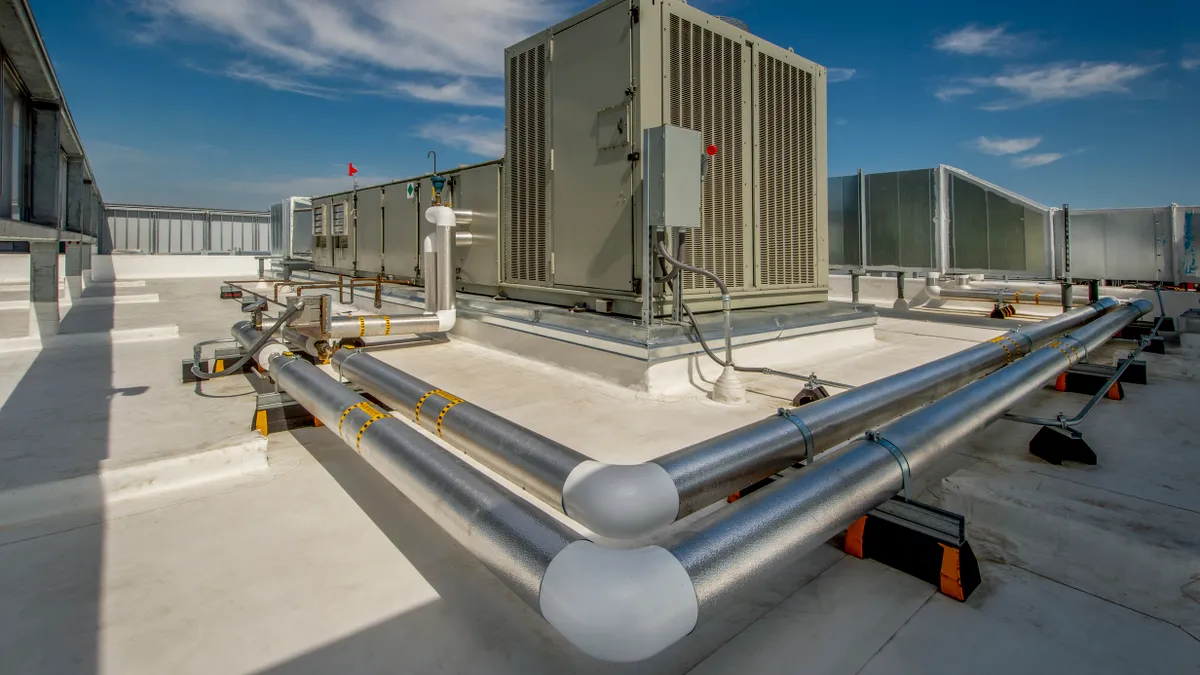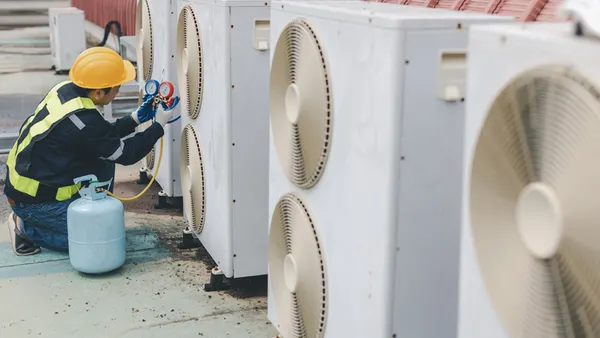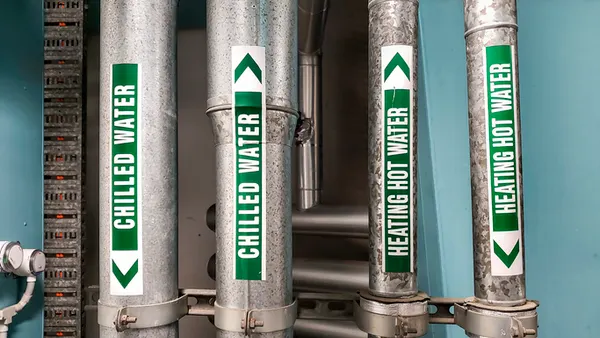Dive Brief:
- The National Renewable Energy Lab has created a data collection and management tool, BuildingSync, to help municipalities and building owners plan energy efficiency and decarbonization investments and meet compliance requirements by streamlining energy audits, NREL said in a May 2 news release.
- Buildee, a software provider for building owners, and New York City partnered with NREL to develop and test the solution, which makes it easier to collect, compare and exchange energy-related information, such as heating and cooling system data, on commercial buildings, NREL said.
- “BuildingSync helps cities make progress toward benchmarking goals, auditing compliance, evaluating program performance, and analyzing trends,” the news release says.
Dive Insight:
More than 100 cities and counties nationwide have adopted policies that require or urge building electrification, with 10 states and the District of Columbia taking action to eliminate or decrease fossil fuel usage. In addition, the Biden administration’s first-ever federal building performance standard, announced in December, aims to achieve net-zero emissions in all federal buildings by 2045.
But local governments often lack the staff and resources to conduct energy audits on thousands of buildings, NREL Senior Research Engineer Nicholas Long said in a statement, noting that cities will need new technologies to meet their building decarbonization goals.
"Every building is unique," Long said. "The only way to address energy and decarbonization compliance is through data management tools that help people continuously track building performance and to look at the bigger picture."
Lauren Adams, a data science researcher at NREL’s Building Technologies and Science Center, said in an interview that BuildingSync creates “a standardized language for exchanging energy audit data” that allows local governments and building owners to carry out a wide range of analyses and fulfill compliance requirements. It was created to facilitate energy audit requirements, Adams said.
New York City is the first U.S. municipality to integrate BuildingSync with Buildee to identify energy and carbon-reduction opportunities in the city’s almost 1 billion square feet of buildings as local laws have prompted building owners to audit and report energy usage, retrofit base building systems and reduce building emissions moving forward.
The city's Department of Citywide Administrative Services and Department of Energy Management helped develop BuildSync capabilities within the Buildee software, which is already used by utilities, municipalities, property owners and energy service providers.
Buildee Program Manager Ben Levine said the company’s work with NREL and New York City would help its users report energy use to the city quickly and easily.
“We’ve integrated a lot of that functionality into our tool,” Levine said.
Adams also noted that NREL provides BuildingSync’s schema framework on its website, enabling users to validate if buildings fit upcoming and existing requirements.
While New York is the first city to utilize BuildingSync technology, NREL said other U.S. cities, including Washington D.C. and San Francisco, are beginning to use the software.
The Inflation Reduction Act further encourages updated building energy standards, including $1 billion in grants to help states adopt new residential and commercial building energy codes.
The Chicago Building Decarbonization Working Group, formed in 2021, also released a report last year with 26 recommendations for equitably addressing greenhouse gas emissions from buildings, which it says account for nearly 70% of the city’s total emissions. The recommendations include increasing energy-efficiency requirements, developing a green bank, and investing in demonstration projects. They also include creating a centralized data and resource hub to help communities access tools and strategies for reducing building emissions.
Interested in this type of news? Sign up for Facilities Dive, a new daily Industry Dive publication set to launch June 5.















